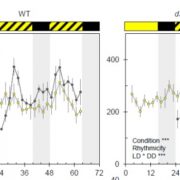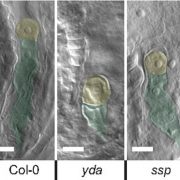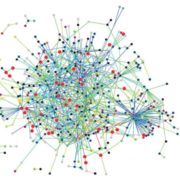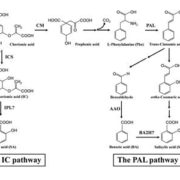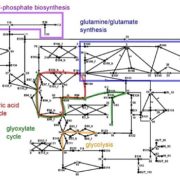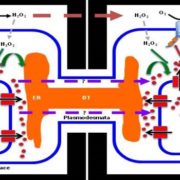OnGuard2 Computational Platform Tracks Guard Cell Processes
Wang et al. discover unexpected connections between humidity and ion transport using a model that bridges guard cell-to-leaf scales https://doi.org/10.1105/tpc.17.00694
By Maria Papanatsiou
Background: Plants rely on stomata on the leaf epidermis for their survival. Stomata are small pores formed between two cells, called guard cells, that allow CO2 entry into the leaf for photosynthesis. Stomata also allow water diffusion out of the leaf in the form of vapor. This diffusion, called transpiration, drives the transfer of essential nutrients from the roots to shoots, but must be controlled to avoid drying of the leaf under low air humidity. Guard cells play a major role in such situations, by closing the stomatal pore to prevent excessive water loss, thereby ensuring the plant’s survival under dry conditions.
Questions: While we know much about the dynamic molecular processes taking place inside the guard cell, how these processes integrate with environmental stimuli is poorly understood. The effect of humidity, especially, has been widely investigated at the level of the whole plant, but its actions at the level of the guard cell have been a matter of much debate. Without a mechanistic framework for exploring how humidity affects stomata, gaining an understanding of these actions is difficult. Can we generate such a model to bridge the gap between the physiology of the whole plant and that of the guard cell?
Finding: Building on the original OnGuard system, which describes ion transport, metabolism and signaling processes occurring in the guard cell, we developed a computational platform, OnGuard2, that expands the system to include transpiration. This next-generation platform predicts changes in transpiration at the leaf level in relation to the environmental factors of humidity, water availability, and temperature. We show that OnGuard2 not only accurately reproduces the effects of leaf water status on stomatal behavior, but also identifies novel physiological responses at the whole-leaf level and at the level of the guard cell. Among these, we show that the model accurately predicts the effects of humidity on individual transporters in single guard cells and the effects of transporter mutants on whole-plant transpiration.
Next steps: We are working to expand the model to incorporate CO2 and photosynthesis at the level of the whole leaf to complete the integration of the platform with the environmental inputs most relevant for stomatal behavior and guard cell biology. The next big challenge will be to use the model platform to identify the most promising molecular targets for improving plant performance under the ever-changing environmental conditions.



